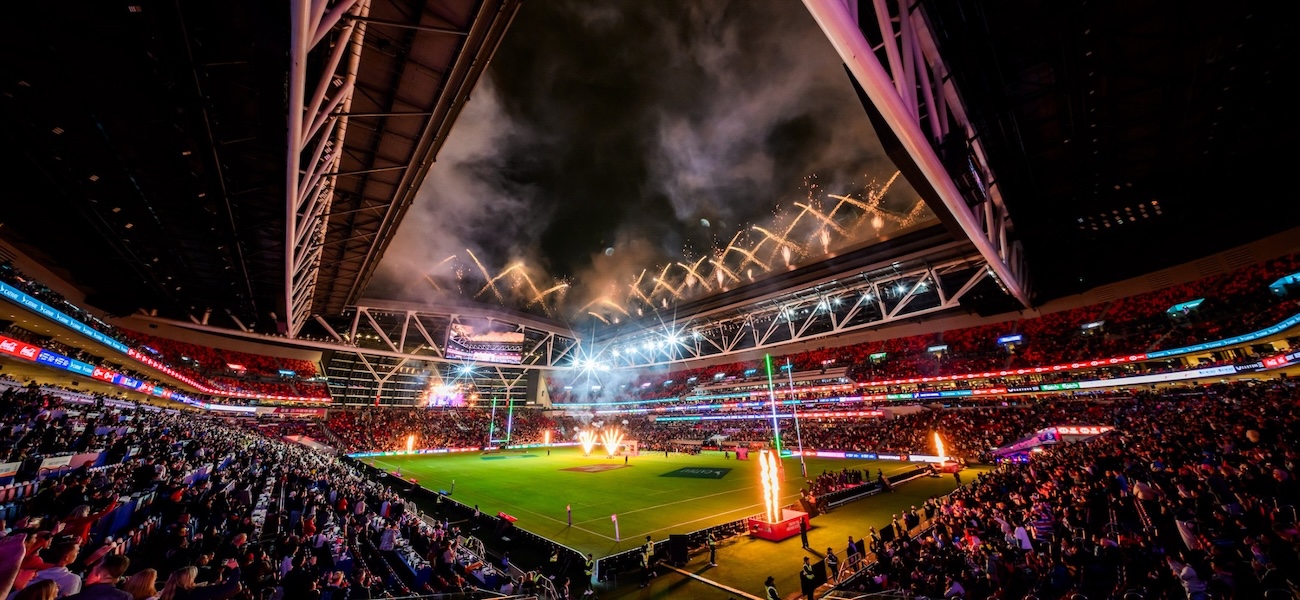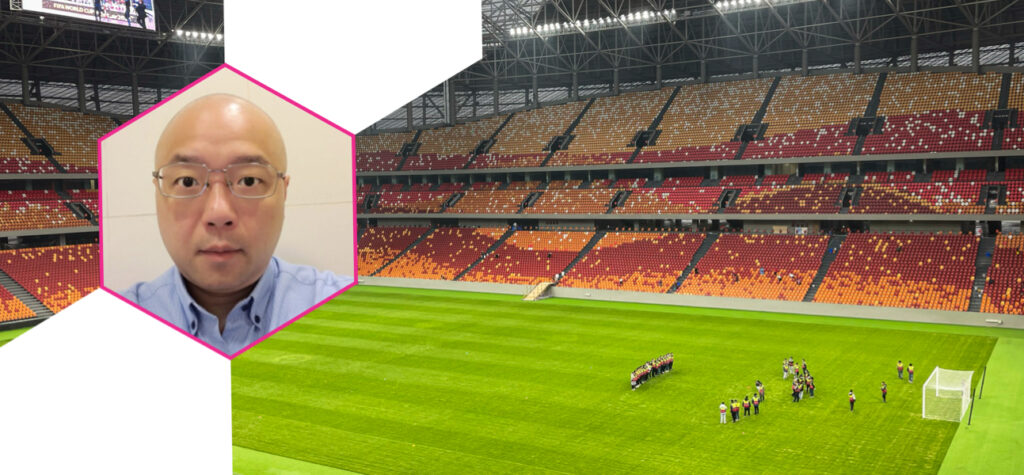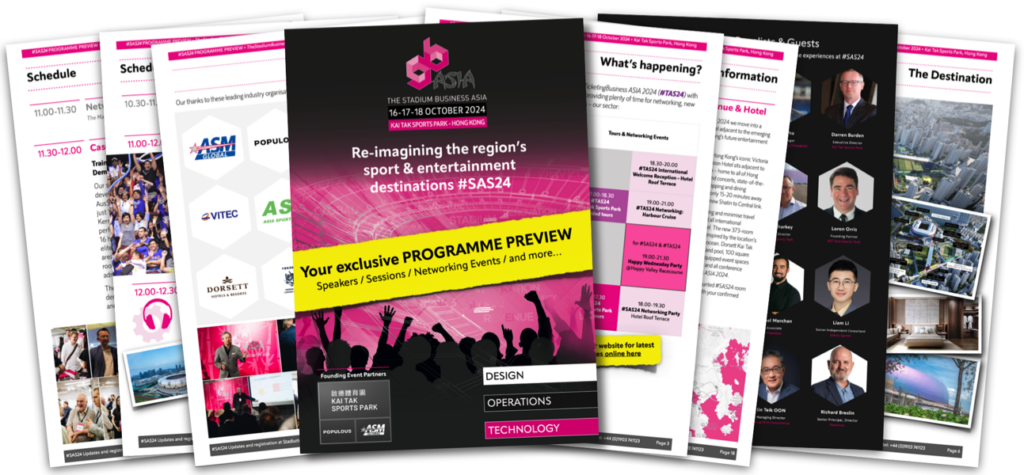#SAS25 Preview: Can Asia set the stage for sustainable mega-events?
While stadium concerts and mega-sport and entertainment events bring people together in shared excitement and anticipation, it can result in significant environmental footprints, from energy consumption to waste generation.
The success of these events goes beyond just their attendance and revenue; artists, sports teams, performers and the attendees want to ensure that their presence is not having a detrimental effect on the environment and so stadium owners and operators are seeing an opportunity to cater for more environmental conscious clients and customers.
At TheStadiumBusiness Asia 2025, from October 21-23 in Hong Kong, Dr Kavita Gonsalves, Associate Principal and Sustainability Design Lead – APAC at Populous will lead a panel of industry experts looking at how Asia can set the stage for sustainable mega-events.
We asked Kavita to tell us about some of the most pressing sustainability issues venue owners and operators need to address and how they are overcoming these.

What are some of the main environmental challenges currently associated with large-scale live events?
Stadium concerts and mega-events are both celebrations and stress tests, magnifying the tensions between spectacle and sustainability.
Up to 80% of total emissions are generated simply by getting people there – the flights, the road trips, the equipment transport. Layer on the energy demands of lighting, sound, and temporary structures, and the footprint grows even larger. Then there’s the waste: food, packaging, construction materials, merchandise — a complex ecosystem of excess that mirrors our broader consumption habits. At the same time, the growing volatility of weather – from heatwaves to floods and storms – is setting the tone for mega-event and venue resiliency and preparedness.
Yet within these challenges lies genuine opportunity. Mega-events have the reach and visibility to influence public behaviour at scale. A younger, more environmentally aware audience, who I call the Environmentally-Engaged-SuperFan (EESF), is already reshaping expectations – embracing reusable materials, low-impact travel, better waste practices and disaster preparedness behaviours. These shifts, though subtle, signal a broader cultural change that could redefine what “a good time” means in the age of climate awareness.
Artists like Coldplay have made headlines for their efforts to reduce the environmental impact of their tours. What practical steps can event organisers and performers take to minimise waste and carbon emissions at stadium-scale events?
Artists like Coldplay, Billie Eilish, Dave Matthews Band, Pearl Jam and even ABBA are redefining live performance, where environmental intelligence now shares the stage with human emotion. As extreme weather intensifies, event resilience has become an art form in itself. Billie Eilish’s Happier Than Ever tour ran on solar and battery systems to reduce grid dependency. ABBA’s Voyage residency pushed innovation further with a demountable, renewable-powered arena built for digital avatars – proof that sustainability can enhance spectacle.
Touring remains carbon-heavy, emitting up to 5,000 tonnes of CO₂e per stadium leg, but artists are making deep cuts. Coldplay’s Music of the Spheres tour reduced emissions by 59% through sustainable aviation fuel, renewable energy, and kinetic dance floors powered by fans. Smart routing and local sourcing trimmed freight emissions by 20% to 30%, while offset programs such as forest preservations and tree planting by Dave Matthews Band and Pearl Jam restore ecosystems.
Stadium shows can generate up to 1,000 tonnes of waste, so sustainable event actions such as Coldplay’s 95% landfill diversion to reusable cup systems and Eilish’s fan “eco-villages” go beyond adding brand value for organiser and artists – they represent what’s possible through collective action.

Audience behaviour and engagement play a vital role in achieving sustainability goals. How can organisers encourage fans to participate in circular practices, such as recycling or using low-impact transport, when attending mega events?
I propose something radical: treat the venue itself as a behavioural instrument – a space that shapes how fans act, connect, and care. Imagine venues designed for sustainable belonging – where environmental behaviour feels natural, social, and joyful.
For low-carbon mobility to stick, venues must be embedded in transport-oriented developments. Shade structures, trees, and landscaped paths make walking or public transit not just possible but pleasant. During the Hong Kong Sevens at Kai Tak Sports Park, this design logic – rooted in nudge theory and choice architecture – which has mobility woven into the fan journey, made low-impact travel the default.
Behavioural science continues inside. Social proof and planned behaviour theory come alive at Tottenham Hotspur Stadium, where visible waste-sorting, live dashboards, and athlete-led messages normalise sustainable action. Meanwhile, Climate Pledge Arena utilises gamified rewards and public recognition to reinforce EESF’s sustainable choices, turning green actions into shared achievements.
Through space, design, and emotion, organisers can turn spectators into participants — where every refill, sorted cup, and meaningful action becomes part of the performance itself. The venue and the mega-event can enable sustainable behaviour through experience that is felt, lived and shared.
Looking ahead, what innovations or policy changes do you think are necessary to make sustainable, circular events the norm rather than the exception in the live entertainment industry?
The next evolution of live entertainment fuses experience with creative climate intelligence – this will be aided by technology, design, and policy.
Artificial Intelligence (AI)-driven energy systems, digital twins, and smart grids have the potential to cut emissions in real time, while MR (Mixed Reality) concerts can expand reach beyond borders. Kinetic floors and solar micro-grids turn fan energy and sunlight into power, and stages built from mycelium and algae-based materials can make for just not zero carbon emissions but also regenerative and restorative environments. Blockchain ticketing can link every seat to verified carbon data, embedding accountability into experience.
Circular systems keep the rhythm going: modular staging, material passports, and food-recovery networks slash waste, while AI-optimised logistics and local sourcing trim freight emissions. Policies are catching up fast, turning sustainability from virtue to baseline.
Last but not the least, the future of live entertainment will be driven by the EESFs: the emerging collective that dances, travels, and celebrates with conscience. In this world, every light show, every chord, every cheer becomes part of a carefully choreographed, biodiversity-accounted regenerative performance.








Share this